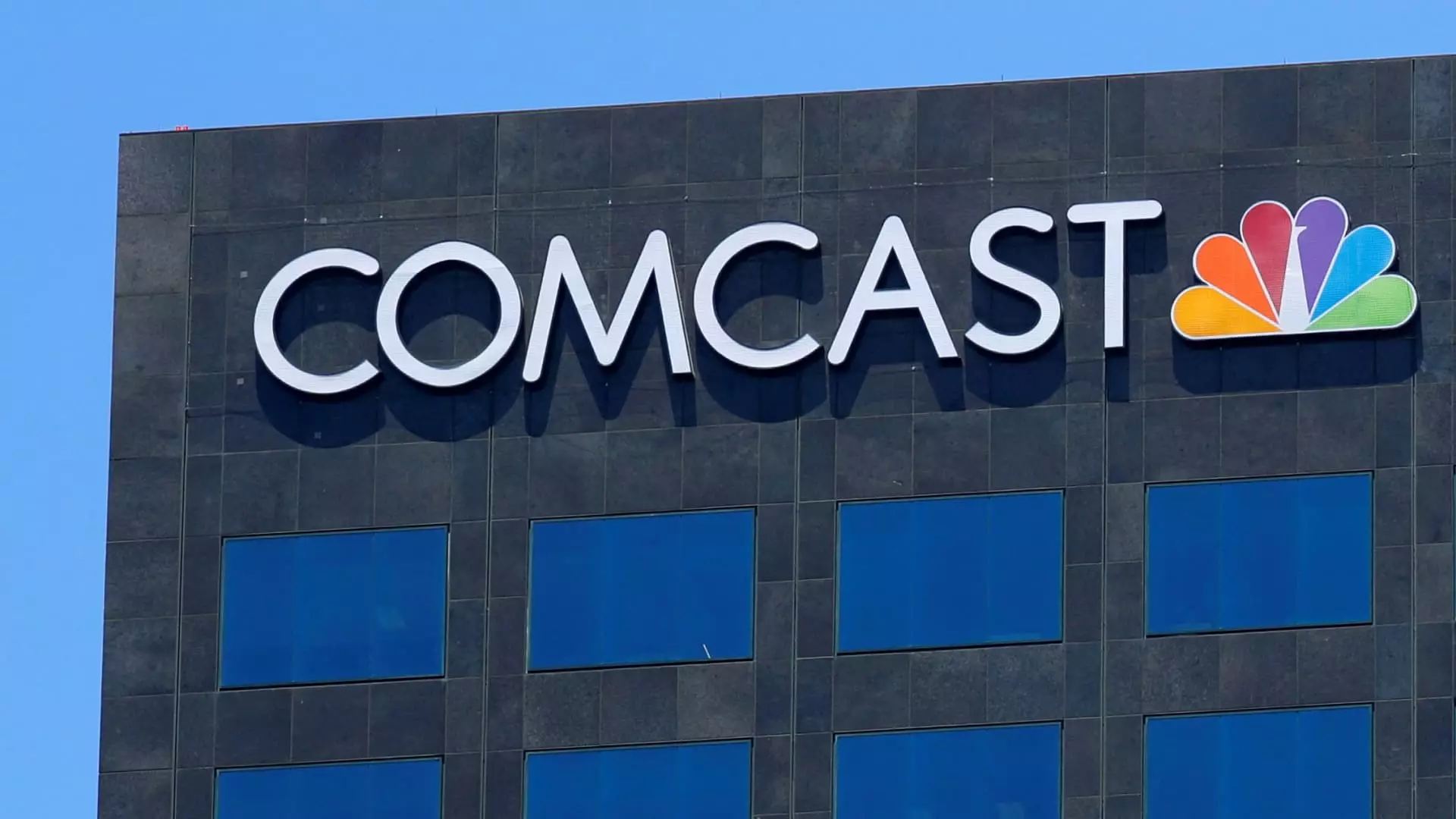In an era where traditional television is grappling with the shift toward streaming services, Comcast’s decision to spin off its cable network channels emerges as a pivotal moment in the evolving media landscape. According to sources connected to the company, this strategic move is set to unfold over the next year, heralding a significant restructuring aimed at adapting to changing viewer habits and enhancing corporate viability.
The forthcoming spinoff will be orchestrated by industry veterans poised to steer the new entity through the escalating challenges in cable television. Mark Lazarus, currently at the helm of NBCUniversal’s media group, will take on the role of CEO for the new company. This selection highlights Comcast’s emphasis on seasoned leadership; Lazarus possesses a wealth of experience in navigating the complexities of media operations. Anand Kini, the existing CFO of NBCUniversal, will serve in a similar capacity for the independent entity, ensuring financial oversight remains robust during this transitional phase.
While Comcast Chairman and CEO Brian Roberts retains a voting stake, he will remove himself from the internal governance of the new company, which allows for a separation of powers that may lead to healthier governance and strategic decisions. This arrangement could be crucial for a company navigating through potential mergers or acquisition opportunities with private equity firms, as indicated in discussions surrounding the spinoff.
The spinoff aligns with a wider industry trend wherein traditional cable networks are feeling the pressure of “cord-cutting,” a phenomenon driven by viewers abandoning conventional pay TV in favor of on-demand streaming options. Recognizing this seismic shift, Comcast’s strategy seeks to create a flexible business model, one that grants the newly established entity the capacity to pursue mergers with other networks or explore alternative pathways that could enhance shareholder value.
Despite the challenges posed by declining subscriptions, it’s imperative to note that traditional networks remain lucrative. For instance, Comcast recently reported a staggering 37% increase in quarterly revenue from its media segment, indicative of the financial viability of its TV networks—at least, in the short term. However, the Olympics played a significant role in this spike, raising questions about sustainability in the absence of such blockbuster events.
As part of the strategic overhaul, the spinoff encompasses a plethora of networks including E!, Syfy, Golf Channel, USA, and Oxygen. Notably, Bravo will remain integrated within Comcast’s NBCUniversal umbrella as its content is considered pivotal for the Peacock streaming platform. This decision underscores a critical strategic approach to retaining valuable programming that could drive subscriptions and viewership on the streaming service. The retention of Bravo and the continued association of NBC and Peacock with Comcast connotes a deliberate effort to consolidate content that serves both traditional and emerging viewing habits.
However, the transition is not without its challenges. The spinoff’s operational nuances, such as licensing agreements and continued relationships between networks like MSNBC, CNBC, and NBC News, will require meticulous planning and negotiation. The complexity of these discussions highlights the intricate web of partnerships that traditional media entities must navigate in today’s fragmented landscape.
From an investor perspective, the spinoff presents a multifaceted opportunity. By creating a “well-capitalized” company that can command its unique market position, Comcast aims to appeal to shareholders who are increasingly demanding innovative solutions to counteract dynamic market forces. As Comcast shares reacted positively, rising over 2% in after-hours trading, it appears that investor sentiment leans toward optimism regarding the restructuring efforts.
Ultimately, Comcast’s spin-off of its cable networks represents both a response to industry challenges and a forward-looking move aimed at revitalizing its position in the media realm. As traditional television continues to grapple with the consequences of evolving consumer preferences, the efficacy of this strategic separation will be closely monitored, shaping the future of content distribution and media consumption for years to come.

Leave a Reply